
2022年カタールワールドカップがいよいよ開幕します!
ドーハ時間で11月20日午後7時、北京時間では21日午前0時、ガルフ・スタジアムで最初のホイッスルが鳴る。ワールドカップ史上初めて中東に進出し、初めて年末に開催される。野外ビールを飲みながらの小さなバーベキューから、大きな綿のジャケットを着てストーブを囲んで鍋を囲むまで、中国のファンに試合の様子を見てもらいましょう。
カタールは暑すぎるため、今夏の最高気温が48℃に達し、調整により現地の冬に変更された。
それでも、クールとは程遠いです。
ノッティンガム大学のシミュレーションでは、満員のスタジアム内はさらに暑くなるだろうと予測している。講堂内の温度は 35 ~ 37°C に達することがあり、中央温度は 42°C に達することもあります。 FIFAが推奨する快適温度範囲である20~25.5℃をはるかに超えています。
実行する方法?カタールは手を振ってエアコンをつけてくれました!
想像してみてください、何万人も収容できるオープンスペースでエアコンを吹き付けるということは、部屋の窓をすべて開けて、エアコンの温度を最低にして強く吹き付けるようなものです。大変な労力とお金がかかるようです。
カタールは、このような空調されたスタジアムを7つ建設しました。 (ハリファ国際スタジアムの残りの部分は改装されています)

1.公開裁判所を冷却するために何段階のステップが必要ですか?
カタールはどれくらい暑いですか?一部のネチズンは言った: “ワールドカップがアジアで最後に開催されたとき、ゲームボールは「フライングファイアメモ」と呼ばれていました。ワールドカップが夏にカタールで開催された場合、気温は40〜50度になります。誰もが飛んでいると思います。火の玉。”
サッカー選手が天候に関係なくゲームをすることが多いという事実に関係なく、高温にはまだ多くの影響があります。
2004 年にポルトガルで開催されたヨーロッパカップでは、各チームは第 1 ラウンドで好成績を収めましたが、天候がますます暑くなるにつれて、チームは勢いを失い、試合のペースはますます遅くなっていきました。かなりスローで、ナイトゲームはより攻撃的でした。
しかも、高額な費用をかけて建設されたスタジアムは毎冬しか使用できず、コストパフォーマンスが低すぎる。ゲームが終わったらすぐに巨大な放置物に成り下がってしまうのではなく、今後最大限に活用していくためには冷却が不可欠です。
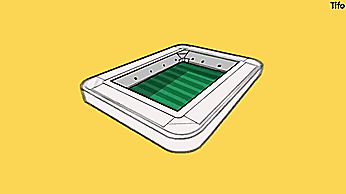
過去のワールドカップでは、高温に直面して、 “完全密閉型スタジアム + 通気性のあるジャージ” 普通に採用されてた。カタールはさらに前進し、スタジアムの設計に多くの創意工夫を注ぎ込みました。
まず、できるだけ建物から暖かい空気を閉じ込めます。
直射日光を減らすために、カタールワールドカップの8つのスタジアムのほとんどは東西軸にあります。このようにして、日中に太陽が輝いている場合、スタジアムとスタンドに最大の日陰を保証できます。
黒は熱を吸収するため、8つのパビリオンのほとんどは明るい色の表面を使用します。もともと砂漠の伝統的なベドウィンのテントに基づいて設計された湾岸スタジアムでさえ、黒から白に変えて冷却する必要がありました。効果は即時でした。屋内温度は、一方の倒れたところに5°C減少しました。


避けるために “侵入” 8会場のうちの1つである教育市体育館は、太陽光を最大限に取り入れ、ダイヤモンドのように輝くデザインとなっている。ひし形のファサードは太陽光の反射率が非常に高く、まばゆいばかりに目を引きます。また、敷地内の温度を制御するために、敷地は地面よりわずかに低く建てられています。
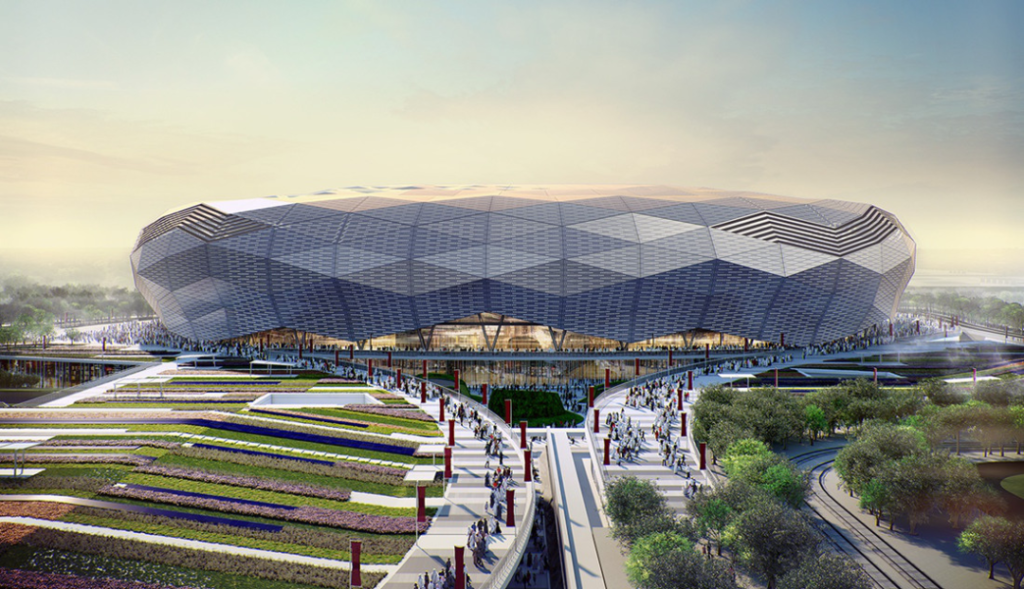
また、煙とレーザーを使用して、3D プリントされた会場モデル上で風洞シミュレーションを実施し、さまざまな風速と気圧の下での空気の流れを観察しました。屋根の曲面により熱気を会場内に侵入させずにできるだけ分散させます。

移動できない場合は、屋根を閉めることもできます。
有名な建築家ザハ・ハディッドによって設計されたアル・ワクラ・スタジアムを例として取ります。その屋根は格納式で、30分以内に閉じることができます。ピッチを覆う帆のように、観客領域を18°Cに冷却します。屋根が開いていても、屋根の折り目が周囲に向かって空気を導く…
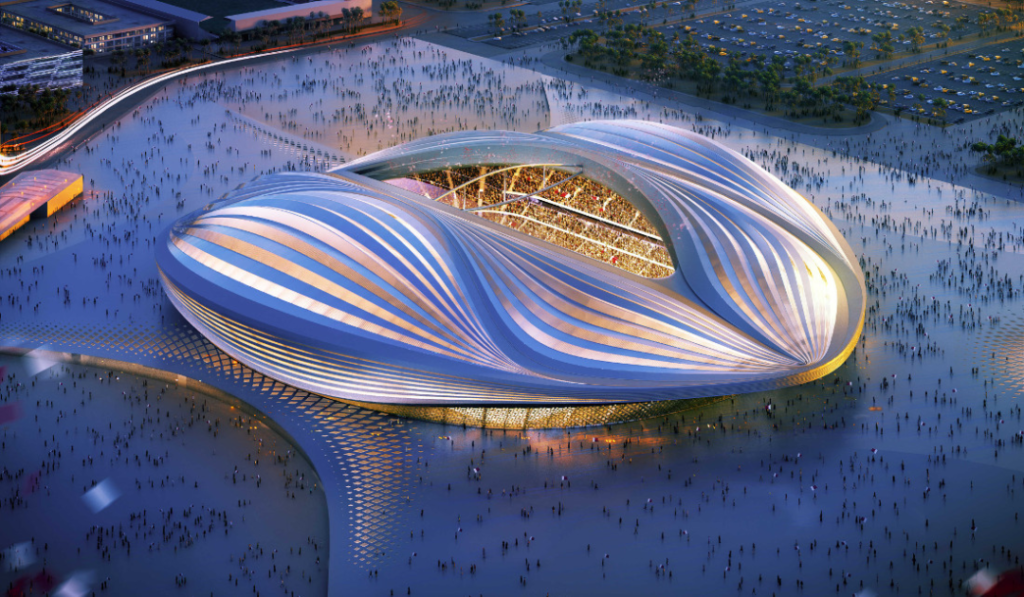
少しシュールに思える別のアイデアがあります。 2011年に、カタール大学は太陽光発電を開発しました “雲” ワールドカップのために。オンボードヘリウムバッグによって育てられ、リモートコントロールによって配置され、太陽が輝いているときにコートに日陰を投げることができます。
このトーナメントで実際に使用されているかどうかについては、待って見てみましょう。

アウトドアも免れませんでした。カタールの首都であるドーハでは、多くの道路がより少ない太陽放射を吸収し、紫外線を反映するために明るい青色に塗られており、それにより通過する歩行者と運転者の体温が低下します。
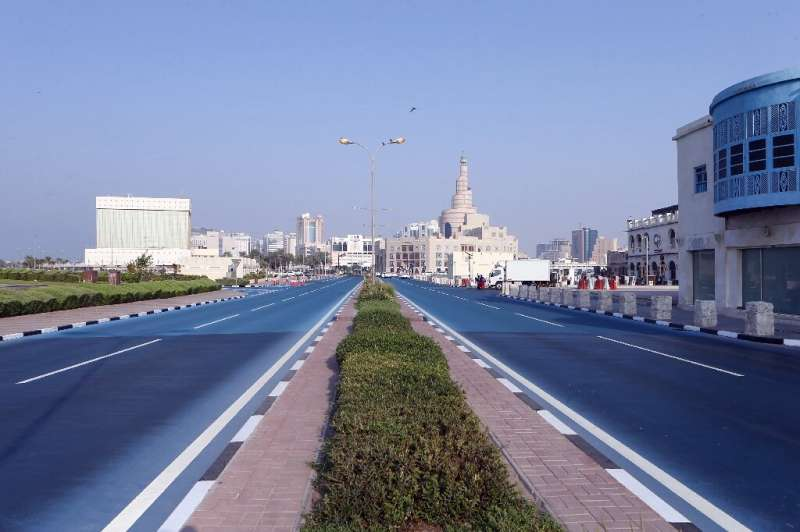
しかし、最も重要なことは、巨大な空調システムに頼ることです
簡単に言えば、ワールドカップ中、会場は継続的に冷気を継続的に会場に届けて、高さ2メートルの高さを作成します。 “完全に孤立しています” クールなバブル。室温が最も低い場合、会場の外側よりも20°C低くなります。
2。これはどのようなシステムですか?
まず第一に、講堂の席の下には、何百もの通気孔があります “隠れた”、シャワーヘッドの小さなノズルと同じです。観客の足首の高さから微弱かつ濃密な冷気を吹き出し、空気を穏やかに循環させます。 “口笛を吹く” 人々を頭痛させるために。
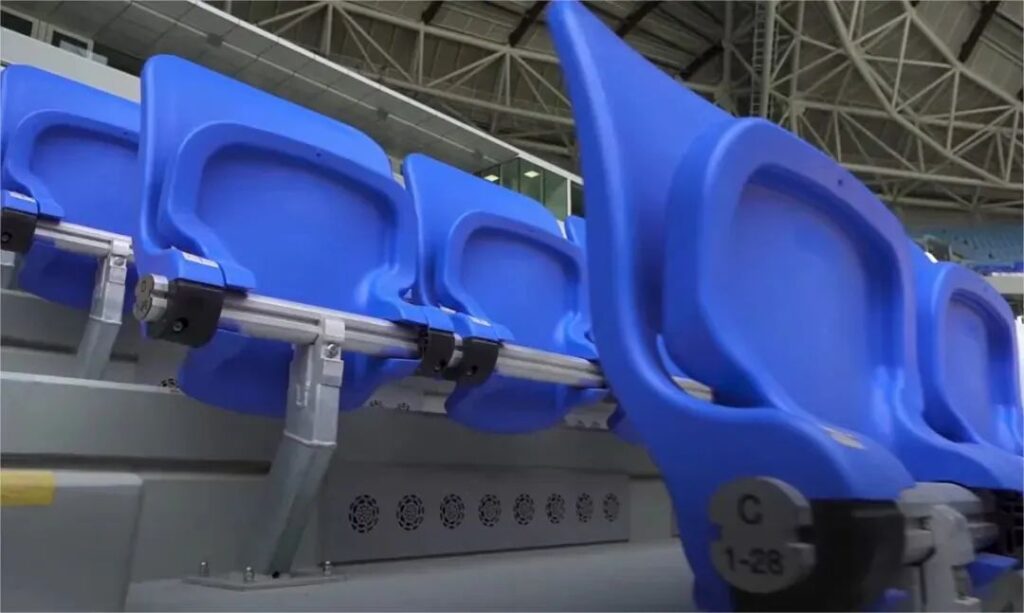
プレーヤーにとって、クールダウンの必要性はさらに緊急です。
研究によると、1試合で各選手は10キロ以上走り、3リットル以上の汗をかく必要がある。カタールの熱帯砂漠気候では、熱をうまく放散できないと熱中症につながる可能性があります。
そのため、コートの周囲には大きなノズルが多数配置されています。吹き出し口の直径は数十センチ以上あり、風も非常に強く、競技場の選手や審判員に冷気をもたらします。
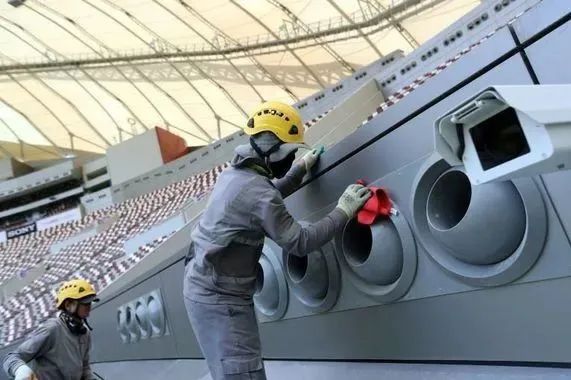
のこのシステムの特別な特徴 “大小のノズル” その目的は、会場全体を冷やすことではなく、 “指示された冷却” より正確には、人々が現れる地域にのみ行動します。これは、スペース全体の10分の1未満です。エンジニアは、一連の正確な流体ダイナミクスモデルを開発しました。空気流の速度と角度を測定することにより、各空気出口の角度が設定されます。
地面から2メートル以下の超薄型の巨大な空調障壁が生まれました。
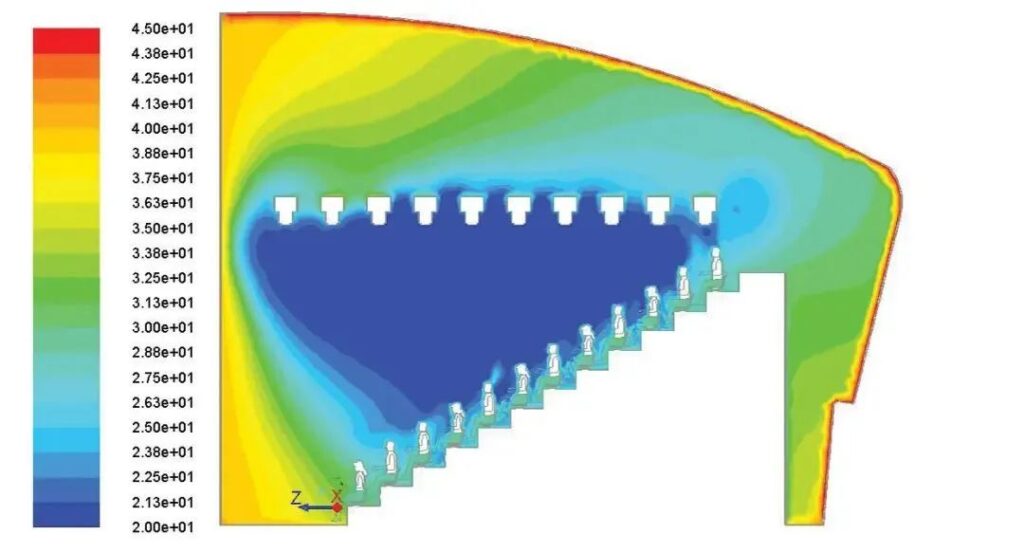
ただし、エアコンが強すぎる場合でも、いくつかのリスクがあります。
For example, before the AFC West Asia ¼ match at the Education City Gymnasium in midsummer this September, the Persepolis team, who was about to play, was worried that the air conditioner would be too cold and they would catch a cold easily, so they thoughtfully prepared blankets for the substitute players…
In addition, many people think that in Qatar, which is full of local tyrants, the cooling system of the World Cup is simply to win by numbers. If one air conditioner is not enough, hundreds of them are installed. As everyone knows, it is actually a set of energy-saving circulatory system.
Unlike the household air conditioners we are familiar with, this system does not use traditional refrigerants such as Freon, but absorbs energy from solar panels, and then uses an expensive absorption chiller to cool an independent water circuit. The 7°C cooling water is stored to cool down the air in the venue.
When the cool air becomes hot again, it will be taken away by the exhaust fan located in the middle area, re-filtered, cooled, and then sent into the venue, and the cycle repeats. Minimize the impact of hot air from outside on the inside.
This also acts as an air cleaner. The refreshing air is blown out from the audience’s feet, and then sucked back from the head, just like a small cabin seat, which can filter dust, sweat odor, or new crown virus to a certain extent.

Under this system, the energy consumption of the court is only equivalent to one-fifth of that of an airport terminal with the same area.
The main source of electricity is a large solar power plant on the outskirts of Doha. It covers an area of more than 10 square kilometers and consists of about 1.8 million solar panels. It will power the stadium during the World Cup and about 10% of the country’s power supply after the game.
3. How much does it cost?
Let’s take a look at it as a whole: According to Al Jazeera’s report, the organizers have invested 200 billion U.S. dollars to build the World Cup project. It is expected that the number will not be less than 300 billion U.S. dollars after the event is over.
What is this concept?
The 2014 World Cup in Brazil cost $11 billion. And this World Cup cost more than the previous seven combined.
Regarding the cost of the refrigeration system, a Reuters reporter once interviewed Dr. Saud Abdul Ghani, the technical director and professor of mechanical engineering at Qatar University. The other party did not reply directly to the specific figure, but said: “This is a lot of money.”
However, the reporters still learned about the approximate amount from other sources. Qatar World Cup Organizing Committee officials have stated that the country will spend 650 to 700 million US dollars on all stadiums and training facilities; the project manager of the venue said that because of the addition of a cooling system (a total of 3,000 vents were installed in the venue), The construction cost of the entire venue has increased by 2-3 times, and each seat is “worth” $6000-7000 on average.
Among the tickets sold for the World Cup, the most expensive first-class final ticket is currently priced at 45,800 yuan, which is equivalent to about 6,000 US dollars. The ordinary ticket price for the group stage is around 2,200 yuan, which is only 310 US dollars after conversion.
Can this pay off?
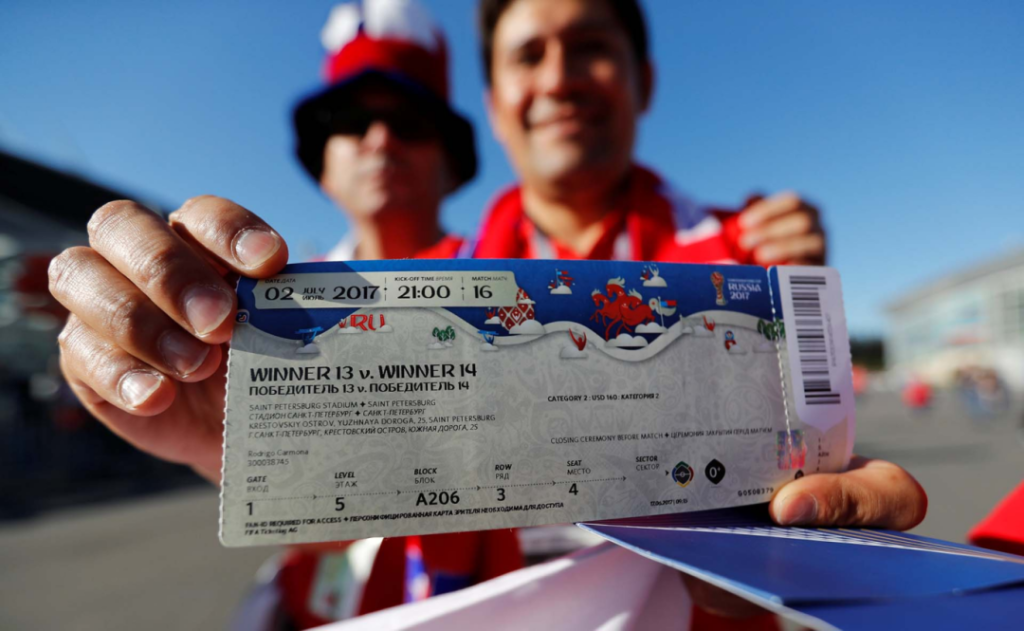
The organizers don’t seem to have too many worries about breaking even.
In previous interviews, they all said that the money they spent was for the long-term economic development of the city and the concept of environmental protection. They put forward a bold idea: the entire competition must achieve carbon neutrality!
FIFA has made a set of comparisons before: because Qatar has a relatively small land area (only about two-thirds of Beijing), thanks to the short distance between venues, less fuel consumption in traffic, and solar cooling technology, it is expected that the World Cup will Carbon emissions are less than a third of those of the last World Cup in Russia.
But when you factor in the carbon emissions from building the stadium (which accounts for 90 per cent of the total) and, because Qatar is too small to accommodate the 1.3 million fans who pour in, many will live in neighboring countries, Those flights are estimated to generate 800,000 tons of greenhouse gases from the daily round-trip flights to watch the game. It’s not a small number when added up—it’s equivalent to driving a passenger car around the world 80,000 times.
Compared with household air conditioners, according to the data released by a domestic brand this year, the carbon footprint of an air conditioner in its entire life cycle is 4119.38 kg CO2eq—equivalent to 194,000 air conditioners operating at the same time.
The organizers have previously stated that they will actively plant trees and manage waste as compensation. To that end, they planted 16,000 trees and nearly 700,000 nursery shrubs, commissioned 800 new electric buses, and a new 800-megawatt solar power plant.
But in the end, it’s all about money.
The carbon neutrality of this World Cup will be achieved mainly through the purchase of carbon credits. So far, Qatar has committed to purchase 1.8 million carbon offsets from the Global Carbon Council. But as of November 14, the Global Carbon Council had awarded it only 550,000 credits, which is just 15 percent of what is needed to achieve carbon neutrality for this World Cup. This, combined with the immaturity of the carbon offsetting system itself, has many questioning Qatar’s commitment to carbon neutrality.
Cooling the planet seems to be a bigger problem than cooling the stadium.










